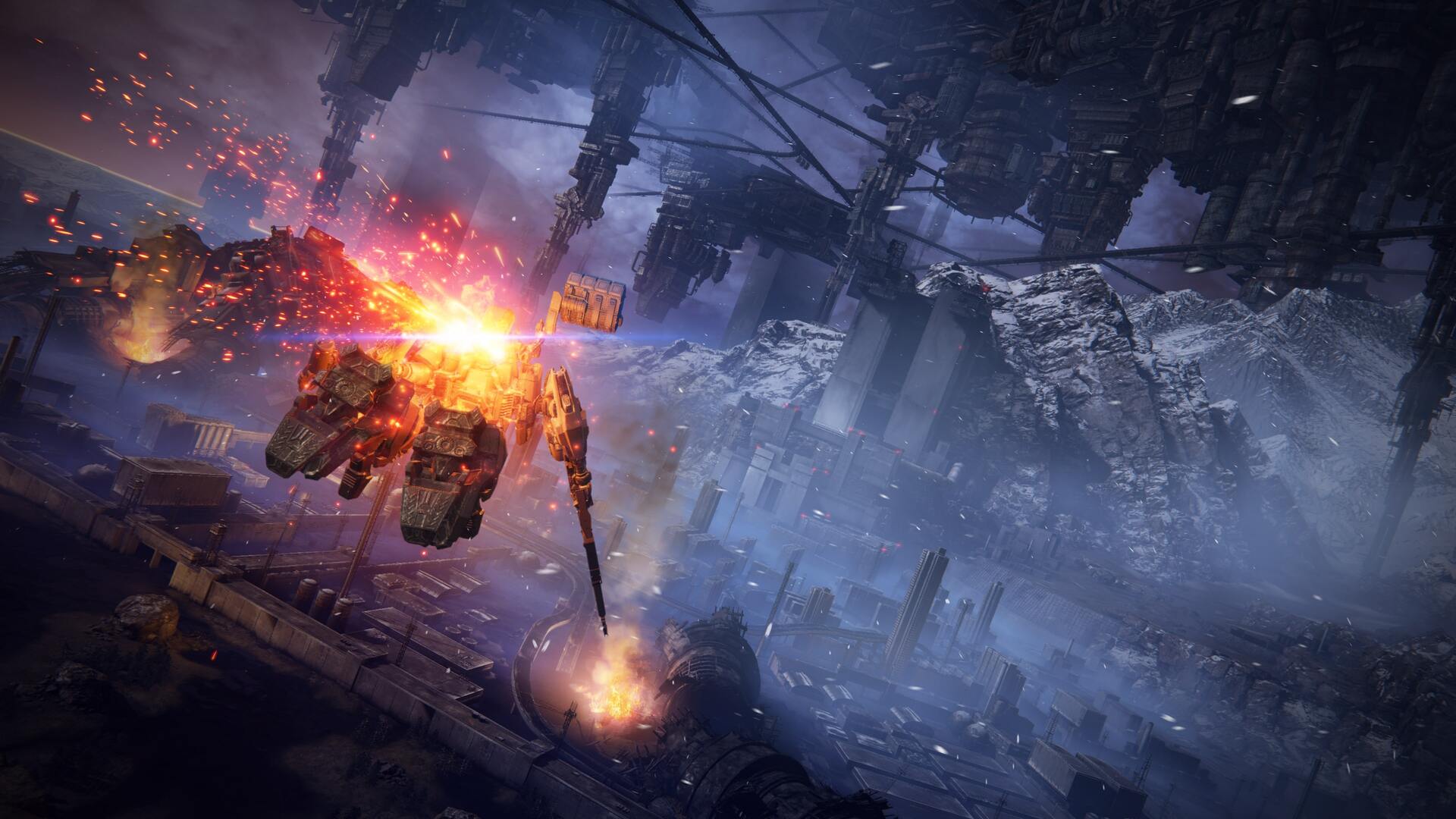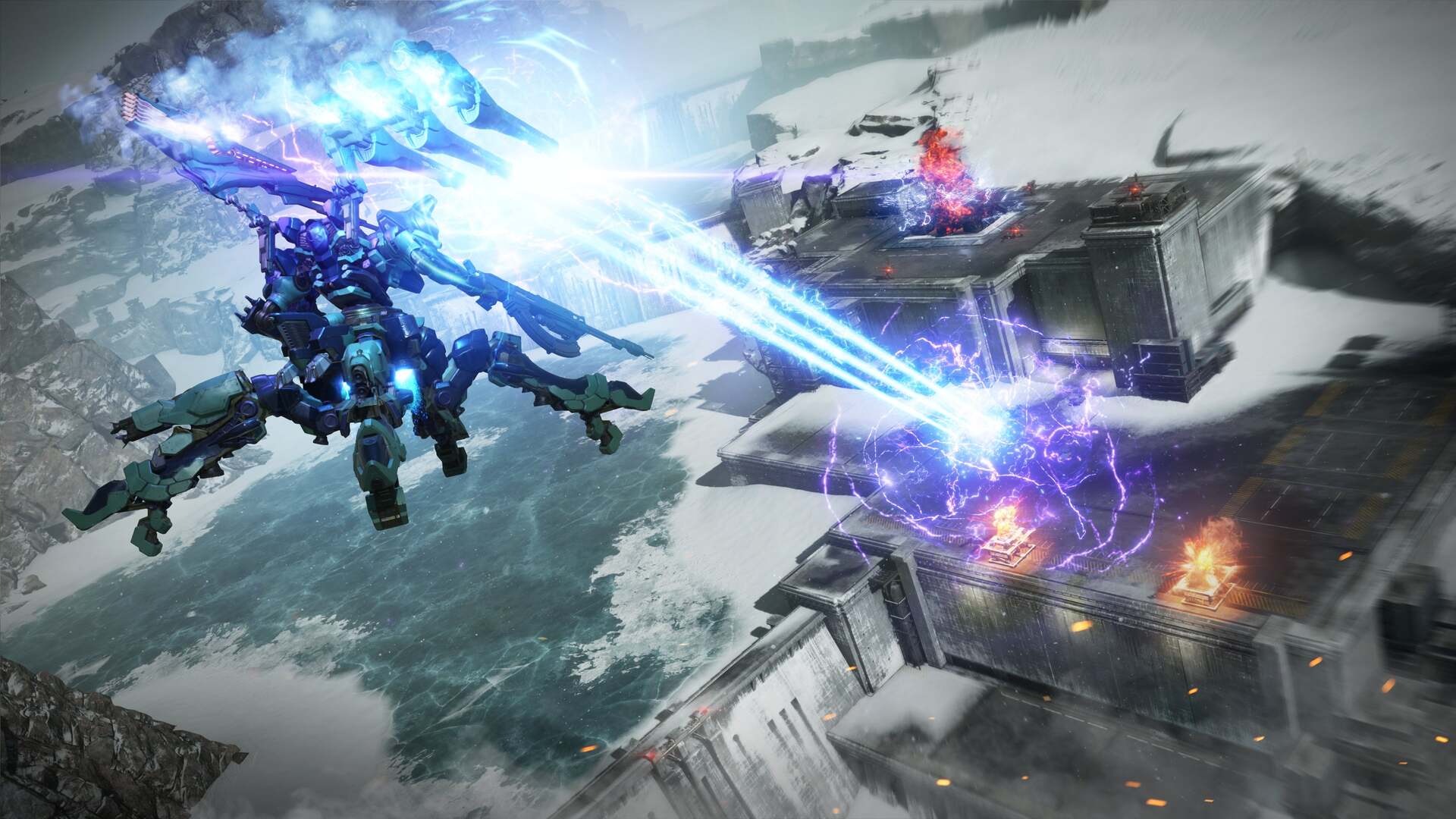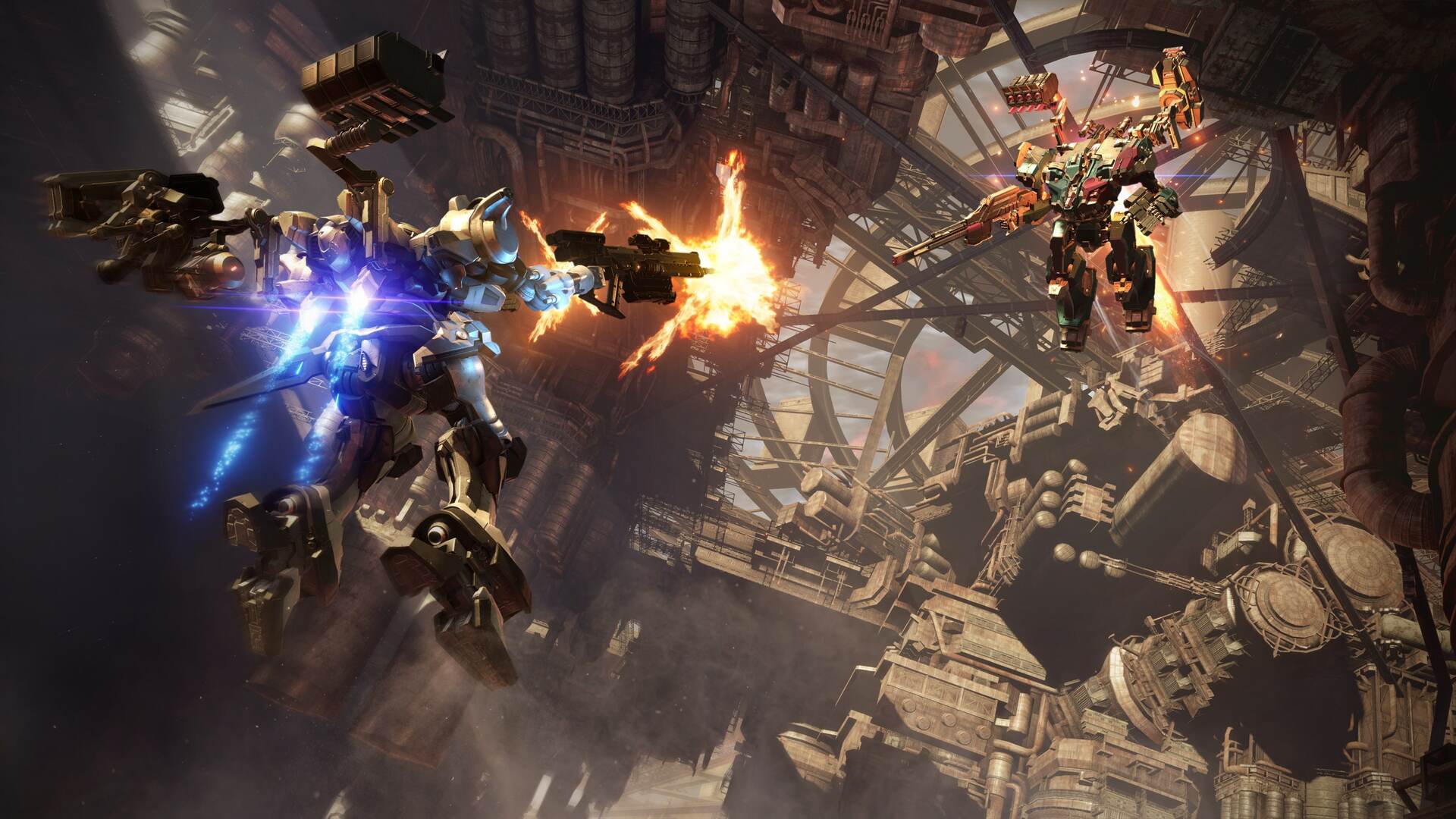Armored Core 6: Fires of Rubicon’s flirtation with soulsborne mechanics makes the game weaker
Mechs and bonfires

In Armored Core 6: Fires of Rubicon, there’s nothing more thrilling than stepping into the enormous metallic shoes of a building-sized mech as you plow through hordes of enemies - except, perhaps, engaging a rival pilot in a tense mech duel. Traditionally, the Armored Core series has been fantastic at delivering on both experiences, yet its latest incarnation has been diluted somewhat by the inclusion of more soulsborne-centric elements.
This isn’t to say that Armored Core 6 isn’t an impressive game in its own right. The slick combat and responsive controls make for a mech combat experience that’s unrivaled in modern gaming. However, its departures from the Armored Core formula in favor of a more Elden Ring-flavored experience have transfigured Armored Core 6 in ways that may frustrate long-time fans, despite following in the footsteps of one of the best RPGs ever made.
Armored Core 6 has less in the way of exciting mech duels and more asymmetrical boss fights - most of which feel more like puzzle encounters than spectacular giant robot battles. Clearly inspired by soulsborne games, these engagements have you do battle with massive constructs which use complex movesets that must be memorized in order to be countered - usually over the course of many deaths. The result of this is that the satisfying engagements with enemy hordes and duels with rival pilots make these set-piece bosses feel jarring and out-of-place by comparison.
In a nod to the Estus Flask from Dark Souls, Armored Core 6: Fires of Rubicon has also introduced the Repair Kit, allowing you to recover hit points in battle. FromSoftware has also added Supply Sherpas on longer missions which prove reminiscent of bonfires. Both of these break up the pacing of Armored Core 6’s engagements, making for a more disjointed and discordant experience outside of their native soulsborne context.
Mech, repair thyself

Repair Kits and Supply Sherpas sit uneasily within the Armored Core formula. Like recovery items in any soulsborne, you have a limited number of Repair Kits. These kits can be used to rapidly recover your mech’s health. However, having to frantically press the repair button after an errant hit in combat serves to undermine the otherwise seamless flow of Armored Core 6’s battles.
In Armored Core 6, even the slowest mechs strafe around the battlefield with speed and alacrity in fluid displays of skill and agility. The Repair Kit injects an impediment to this, distracting from the well-crafted rhythm of the mech battles. Additionally, they serve to make the mechs themselves feel far more fragile. Rather than simply having enough health to shrug off a few nasty blows, as they would have done in a previous game in the series, incoming damage is often high, and Repair Kit usage is a necessity. At its worst, it feels like it’s not your weapons or skill that won you the battle, but your Repair Kits - a feeling that distracts from the fantasy of being a mech-piloting badass.
Repair Kits also serve to erode Armored Core 6’s simulationist bent. In a game that asks you to make meticulous and satisfying decisions about everything from your mech’s weapon loadout to its mech distribution, it seems counterproductive for there to be a magic button that inexplicably recovers your health. It makes Armored Core 6’s titanic machines and their imposing superstructures seem strangely trivial when the damage from a plasma cannon blast can be arbitrarily restored at the press of a button.
Get daily insight, inspiration and deals in your inbox
Sign up for breaking news, reviews, opinion, top tech deals, and more.
Supply Sherpas aren’t as egregious, but do contribute to a sense of unease. Bonfires in all but name, these supply drops provide an opportunity to reset mid-mission, their placement usually foreshadowing a boss. By allowing you to heal mid-mission, Supply Sherpas render the previous leg of your mission unimportant by comparison.
What was the point in artfully dodging and weaving your way through that last pack of enemies if you’d known that brute forcing your way to a Supply Sherpa was an option all along? When revisiting old missions with Supply Sherpas, I often found myself zooming toward the objectives with little concern for my safety, knowing that all damage would soon be patched up.
We who are about to die

The asymmetrical boss fights themselves are frustrating and unsatisfying compared to the tighter mech duels on offer elsewhere in the game. Armored Core 6 boasts an arena mode, that offers more than two dozen 1v1 mech battles for players to sink their teeth into. These contests are Armored Core 6 at its best: you and the opposing mech playing by the same rules and having access to the same suite of options. As a result, Arena battles are full of heartstopping maneuvers and pulse-pounding action - and look stunning to boot.
By contrast, many of the boss fights feel out of place. At their best, the large-scale boss fights feel like puzzles, solved by reconfiguring your mech to account for the strengths and weaknesses of the boss. At worst, however, these encounters make you feel like you’ve brought Hungry Hungry Hippos to a chess tournament. It’s times and feelings such as these that make it feel like the game would have been better served by having its boss encounters exist as separate, standalone missions.
These boss fights are large-scale spectacles, pitting you against mechanical constructs reminiscent of Nier: Automata’s gallery of diverse and terrifying super-robots. More often than not, these machines dwarf your mech, forcing you to rely on mobility in an altogether different way. That said, the skills you’ve cultivated in the arena or against hordes of smaller foes will be of little use here.
This undermines the mech pilot fantasy, transfiguring your mech from an expression of your own identity into a factory-sized Rubik's Cube
In the soulsborne tradition, each boss has a sequence of attacks that must be learned, memorized, and then countered, always with little room for error. When you die, there’s an opportunity to refit your mech, allowing you to alter your build to better meet the challenge. In and of itself, this process can be satisfying. However, it also reveals a bigger problem.
Armored Core is about forging your own identity as a mech pilot. The exhaustive customization options, both mechanical and cosmetic, exist to allow you to leave your own unique mark on the game experience. Most of Armored Core 6 obliges when it comes to this. Conversely, the soulsborne style boss fights are much less accommodating, demanding you adjust your mech to fit the challenges posed by a specific enemy rather than embrace and utilize your own style.
This undermines the mech pilot fantasy, transfiguring your mech from an expression of your own identity into a factory-sized Rubik's Cube. Yes, Armored Core 6 will let you be the cool mech pilot of your dreams, but, unlike its predecessors, it only allows you to do this on the game’s terms, not your own. Soulsborne mechanics, while wonderfully executed in elsewhere, cast a shadow over Armored Core 6: Fires of Rubicon which cannot easily be ignored.
Looking for more action? Check out our list of the best PS5 games as well as our full list of upcoming games coming out in the future.

An editor and freelance journalist, Cat Bussell has been writing about video games for more than four years and, frankly, she’s developed a taste for it. As seen on TechRadar, Technopedia, The Gamer, Wargamer, and SUPERJUMP, Cat’s reviews, features, and guides are lovingly curated for your reading pleasure.
A Cambridge graduate, recovering bartender, and Cloud Strife enjoyer, Cat’s foremost mission is to bring you the best coverage she can, whether that’s through helpful guides, even-handed reviews, or thought-provoking features. She’s interviewed indie darlings, triple-A greats, and legendary voice actors, all to help you get closer to the action. When she’s not writing, Cat can be found sticking her neck into a fresh RPG or running yet another Dungeons & Dragons game.